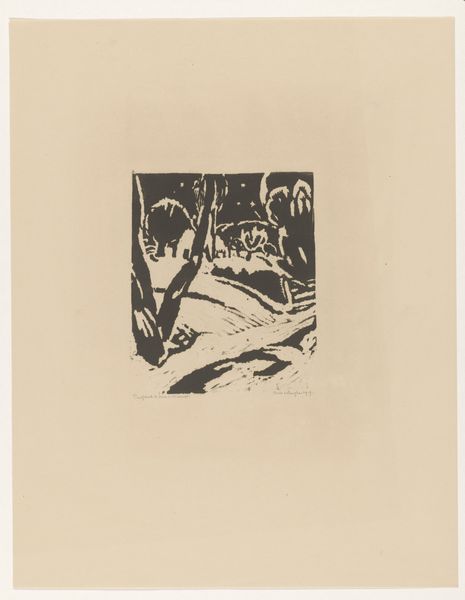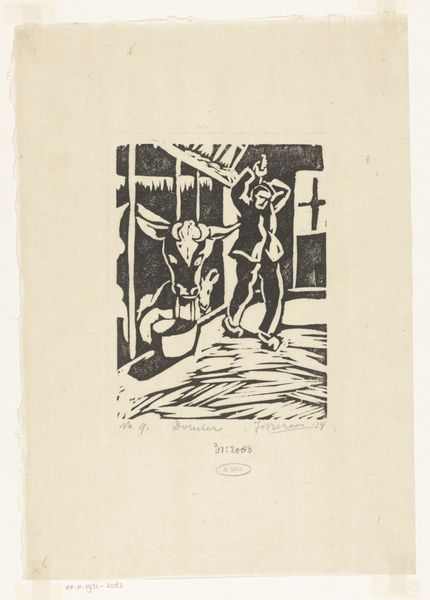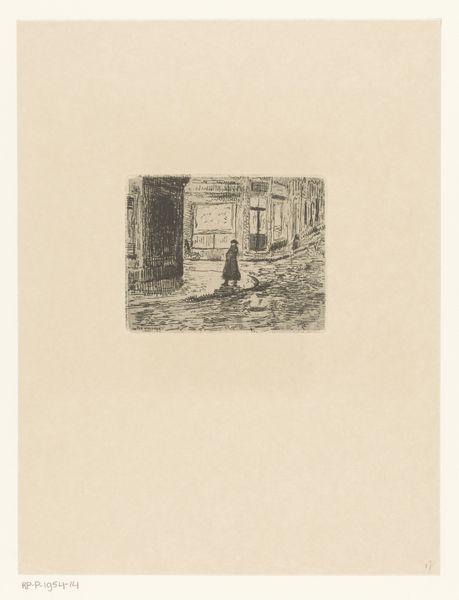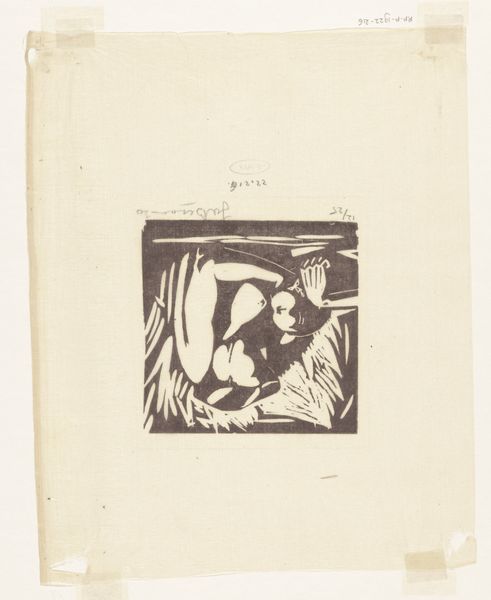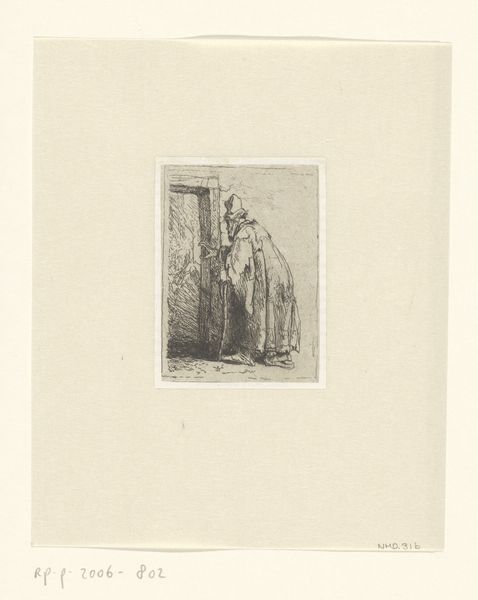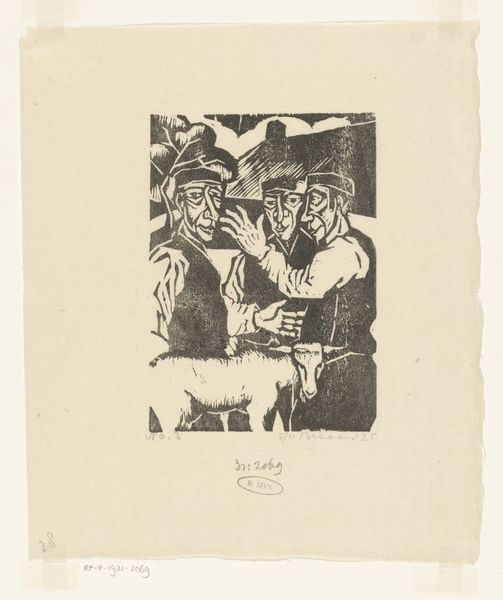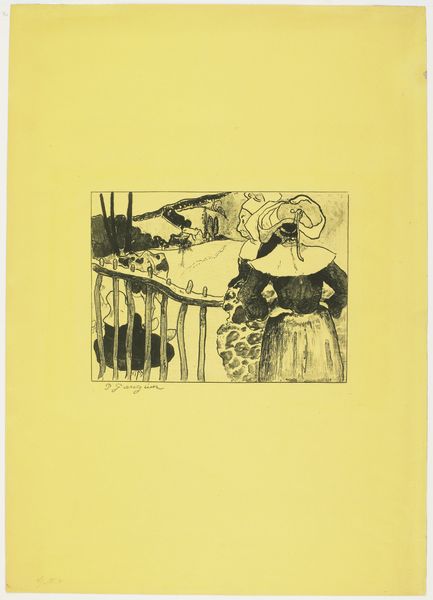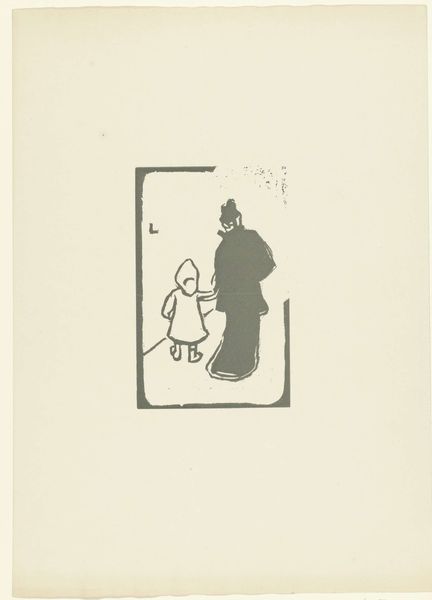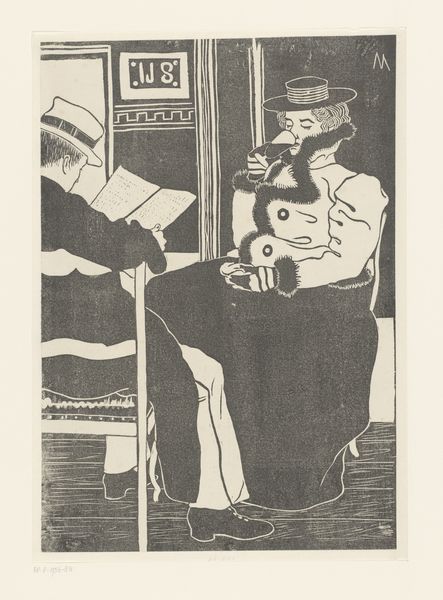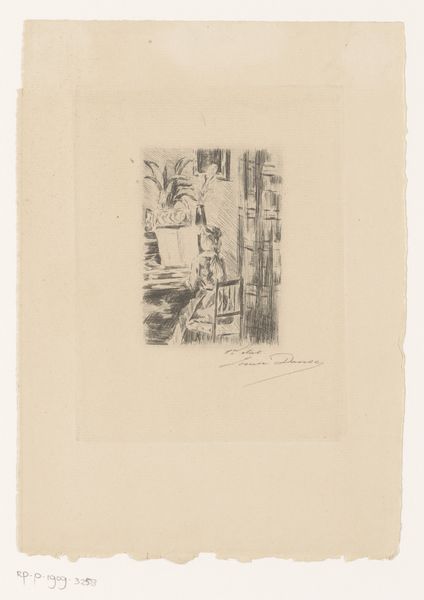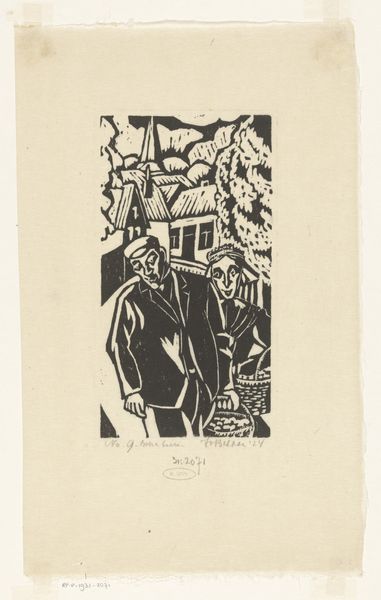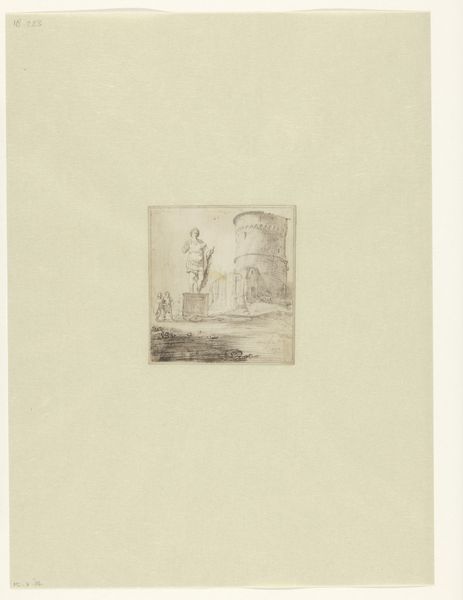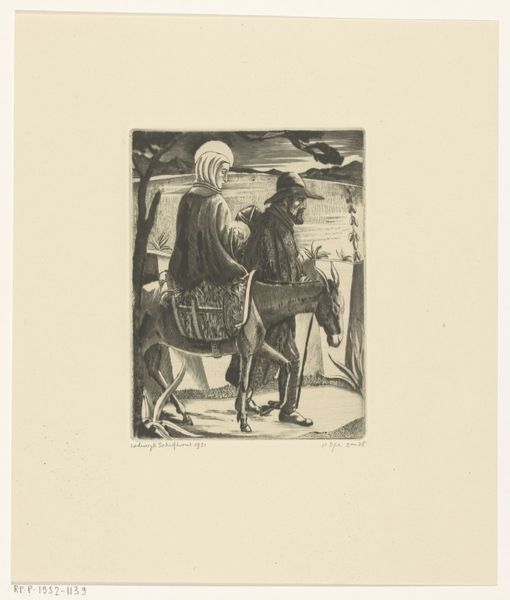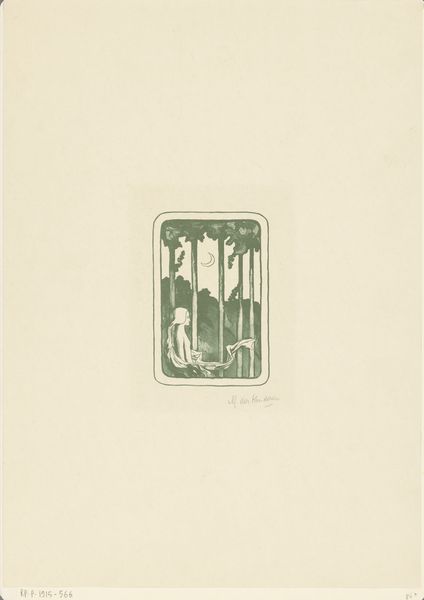
drawing, print, ink, woodcut
#
portrait
#
drawing
# print
#
landscape
#
figuration
#
ink
#
expressionism
#
woodcut
#
modernism
Dimensions: height 240 mm, width 160 mm
Copyright: Rijks Museum: Open Domain
Curator: This woodcut print by Hendrik Nicolaas Werkman, created sometime between 1892 and 1923, is titled "Twee mannen met hoeden"—"Two Men with Hats" in English. My initial reaction is one of starkness and tension. Editor: Yes, there's a formality to it, isn’t there? The limited palette intensifies the focus on gesture and posture. These figures, rigidly posed and firmly planted, could be interpreted as figures of authority or solemn characters caught in an unspoken transaction. I wonder, what were the prevailing socio-political undertones of the period that Werkman was a part of? Curator: Absolutely. The handshake itself is loaded. It can represent agreement, reconciliation, or even a power dynamic being negotiated. In heraldry and emblem books, clasped hands symbolize trust and faith, but here the stark black and white and angular carving evokes more of a somber ritual, or some sort of business transaction rather than simple friendship. It brings to mind the symbolic significance of handshakes across time. Editor: Precisely! And Werkman, rooted in early 20th century Netherlands, would have been aware of the increasing complexities surrounding political relationships both nationally and abroad. I imagine the sharp lines mirror the social division felt by the rise of industrial capitalism as well as socialist opposition during his career as an artist. Are there elements in the symbolism here, though, that specifically align it to expressionism, considering he developed it somewhat later than some? Curator: While not as overtly expressive as some contemporary movements, its simplification and stark contrasts do reflect a move toward emotional intensity over strict realism. The rough cuts lend a feeling of unease to the figures, an undercurrent of nervous agitation one expects from Expressionists breaking from tradition. One wonders about Werkman's state of mind during that era to inform this rendering and choice of imagery. Editor: And the historical setting is so vital. We mustn't divorce an artwork from the landscape from which it originates. Thinking about how it may have functioned within exhibitions in Groningen or his other socio-political engagements would bring so much texture. So much texture which Werkman manages to draw from the act of printmaking itself! I must add, thank you for unlocking it through symbolist angles, I think together that adds weight to Werkman's intention with this image. Curator: My pleasure. It highlights how understanding symbols allows one to reframe history, culture and context.
Comments
No comments
Be the first to comment and join the conversation on the ultimate creative platform.
